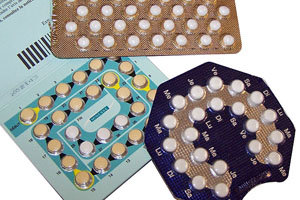The recent flap over whether or not birth control will be considered a co-pay-free “preventive service” won’t be resolved until Health and Human Services issues a ruling next August. But in the meantime, I’ve been thinking a lot about the cost of birth control, specifically, cost-effectiveness. After all, contraceptive use in and of itself saves around $19 billion in direct medical costs in the US.
I recently found a study that shows that it’s not just the cost of the birth control that Americans pay for: it’s the failure cost. As shown in this 2009 study by Princeton’s James Trussell, oral contraceptives only cost around $526 a year themselves but the cost of their failure during typical use adds another $132 a year. I was surprised to learn that one of the most cost-effective methods of birth control (aside from more permanent methods like vasectomy or IUDs) is the male condom. In fact, according to Trussell’s paper, out of 17 methods of contraception, not taking insurance into account, the patch, the pill, and the sponge are among the least cost-effective; the most cost-effective are IUDs, vasectomy, and the male condom.
This isn’t to say that I advocate insurance companies only cover cost-effective methods of birth control, but I find it interesting that the system is set up so that even if you use a birth control method with a very high failure rate (e.g. withdrawal, fertility awareness), it’s still more cost-effective than many modern pharmaceuticals. The entire cost of withdrawal was its failure cost, about $403/yr, while the pill was $676/yr. Even if you were using a pill that was covered by insurance with a co-pay of around $30/month, you’d still pay $360/yr for it which is more than using the less-effective condom ($315/yr). One would hope that if conservatives really want fewer abortions, they’ll at least endorse the coverage of contraceptives like IUDs which are the most cost-effective and the most effective at preventing pregnancies.










